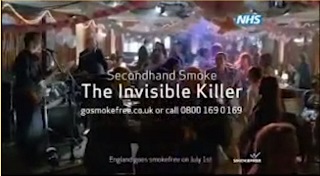Fear, guilt and the psychology of risk
Fear and guilt appeals are often premised on notions of risk: that by communicating the risk involved in specific behaviours, the target audience will engage with the message (Eagle et al., 2020). Exploring this theme in more detail, Vos et al. (2017), in a study of gamblers in Australia, found that fear, in particular, evokes threats such as isolation and loss of self-esteem and identity, which can be powerful motivators to act.
One particular campaign that combined both fear and guilt was the UK NHS ‘Second-hand smoke is a killer’ campaign that not only drew attention to the risks of smoking to the smoker (fear appeal) but also the impact it might have on others, such as family members and friends (guilt appeal). Watch an advert from the campaign here:

Transcript: Video 10: NHS ‘Second-hand smoke – the invisible killer’ advert
De Pelsmacker et al. (2017) identified six types of risk that marketers employ, shown in Table 6.3.
| Risk | Description |
|---|---|
| Physical | The risk of bodily harm |
| Social | The risk of social ostracism |
| Time | The risk of wasted time |
| Product performance | The risk of purchasing a poor-quality alternative |
| Financial | The risk of losing money or making a poor investment |
| Opportunity loss | The risk of missing out by not acting |
